- What is Juniper?
- Characteristics of Juniper
- Uses of Juniper
- Why Grow Juniper?
- Drought Tolerance
- Low Maintenance
- Attractive Foliage
- Wildlife Habitat
- Erosion Control
- Choosing the Right Juniper
- 1. Purpose
- 2. Growth Habit
- 3. Size
- 4. Soil and Light Requirements
- 5. Maintenance
- 6. Hardiness
- Different Juniper Species
- 1. Eastern Red Cedar (Juniperus virginiana)
- 2. Rocky Mountain Juniper (Juniperus scopulorum)
- 3. Chinese Juniper (Juniperus chinensis)
- 4. Common Juniper (Juniperus communis)
- 5. Creeping Juniper (Juniperus horizontalis)
- 6. Shore Juniper (Juniperus conferta)
- Features to Consider
- Variety of Species
- Growth Habit
- Size
- Foliage Color and Texture
- Tolerance to Environmental Conditions
- Maintenance Needs
- Wildlife Value
- Special Uses
- Pricing and Availability
- Juniper Propagation
- Propagation Methods
- Caring for Juniper Cuttings
- Transplanting Juniper Cuttings
- Methods of Propagation
- Seed Propagation
- Cutting Propagation
- Layering
- Grafting
- Division
- Air Layering
- Suckers
- Tips for Successful Juniper Propagation
- 1. Choose the Right Method
- 2. Find the Right Juniper Species
- 3. Collect Seeds in Fall
- 4. Prepare the Cuttings
- 5. Provide the Right Growing Conditions
- 6. Be Patient
- 7. Protect the Young Plants
- 8. Divide Established Plants
- 9. Learn from Experience
- Caring for Juniper
- 1. Watering
- 2. Pruning
- 3. Fertilizing
- 4. Mulching
- 5. Sunlight
- 6. Pest and Disease Control
- 7. Winter Protection
- Pruning and Shaping
- When to Prune
- Tools for Pruning
- Pruning Techniques
- Shaping Junipers
- Conclusion
- Questions and Answers:
- What are the different species of juniper?
- How do I grow juniper plants?
- Can juniper plants be grown from seeds?
- Can juniper plants be propagated through cuttings?
- How tall do juniper plants typically grow?
- Do juniper plants require any special care?
- Can juniper plants be used for bonsai?
- Videos: How To Care For Juniper Bonsai ( 2019 ) A JUNIPER CRASH COURSE
Juniper is a versatile evergreen plant that is commonly grown for its attractive foliage and ability to thrive in various climates and conditions. It belongs to the cypress family and is native to parts of North America, Europe, and Asia. With its wide range of species and cultivars, juniper offers gardeners numerous options for creating beautiful landscapes.
One of the main advantages of growing juniper is its low maintenance requirements. This hardy plant is known for its tolerance to drought, heat, and poor soil conditions. It is also resistant to many pests and diseases, making it an ideal choice for gardeners looking for a low-maintenance option. Its dense foliage provides excellent privacy when used as a hedge or screen, and its distinct blue-green color adds visual interest to any landscape.
When it comes to propagation, junipers can be grown from seeds, cuttings, or grafting. Growing from seeds is the most common method, but it requires patience and time as juniper seeds have a natural dormancy period and may take several months or even years to germinate. Cuttings, on the other hand, provide a faster method of propagation, but require proper care and attention to ensure successful rooting. Grafting is another option, especially for those looking to propagate specific cultivars with desirable traits.
There are many different species and cultivars of juniper available, each with its own unique characteristics. Some popular species include Juniperus communis, Juniperus horizontalis, and Juniperus virginiana. Each species has its own growth habit, size, and leaf color, allowing gardeners to choose the perfect juniper for their specific needs and preferences.
In this complete guide, we will delve into the world of juniper and explore its growing requirements, propagation methods, and various species and cultivars. Whether you are a beginner gardener looking to add some greenery to your landscape or a seasoned enthusiast wanting to expand your juniper collection, this guide has everything you need to know about juniper.
What is Juniper?
Juniper is a type of plant that belongs to the cypress family, Cupressaceae. It is a small evergreen shrub or tree that is known for its aromatic foliage and distinct blue or green berries. Juniper plants are native to various regions around the world, including North America, Europe, and Asia.
There are over 50 species of juniper, each with its own unique characteristics and growing requirements. Some of the most common species include Juniperus communis, Juniperus chinensis, and Juniperus scopulorum.
Characteristics of Juniper
- Juniper plants have needle-like leaves that grow in whorls or clusters along the stems. These leaves can vary in color from bright green to silver-blue, depending on the species.
- The berries of a juniper plant are actually cone-like structures called juniper berries. They are small, round, and usually have a bluish hue, although some species produce green or brown berries.
- Juniper plants are typically low-maintenance and have a slow to moderate growth rate. They are known for their drought tolerance and can thrive in various soil conditions.
- Many species of juniper have a dense, compact growth habit, making them popular choices for hedges, borders, and groundcovers. Other species can grow into tall, pyramidal trees.
Uses of Juniper
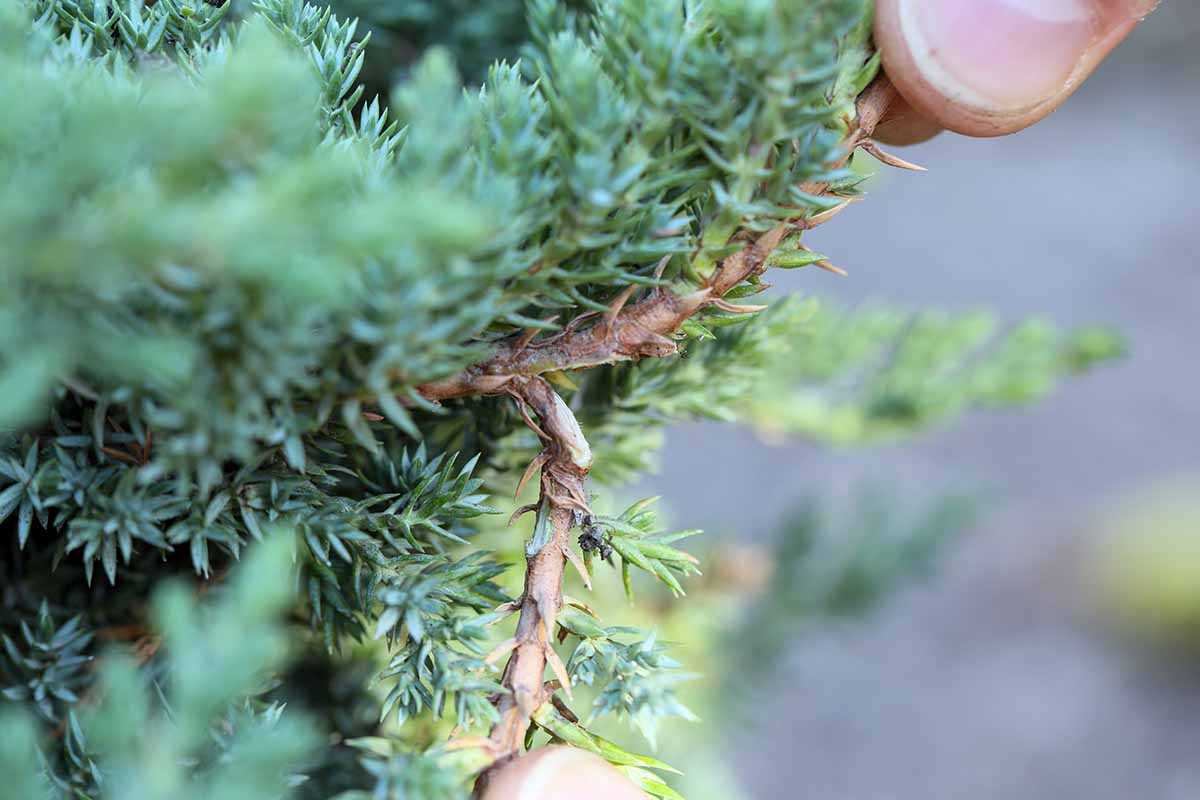
Juniper has been used for various purposes throughout history. The berries of certain juniper species are used in cooking to add flavor to dishes such as gin, sauerkraut, and meat marinades. They can also be distilled to produce essential oils with a wide range of medicinal and therapeutic properties.
Juniper plants are often planted for landscaping purposes due to their attractive foliage and ability to tolerate various growing conditions. They can be used to create privacy screens, windbreaks, and ornamental features in garden designs.
Overall, juniper is a versatile plant that offers both aesthetic and practical benefits. Its distinctive appearance and ability to thrive in different environments make it a popular choice among gardeners and horticultural enthusiasts.
Why Grow Juniper?
Juniper is a versatile and attractive plant that can enhance your garden in many ways. Whether you have a small balcony or a large backyard, junipers can thrive in various environments and add beauty and interest to your outdoor space.
Drought Tolerance
One of the greatest advantages of growing junipers is their ability to withstand drought conditions. These plants have long taproots that allow them to access water deep within the soil. This makes them excellent choices for regions with dry climates or areas where water conservation is a concern.
Low Maintenance
Junipers are known for their low maintenance requirements. Once established, these plants are highly resilient and can withstand neglect, making them ideal for busy gardeners or those with little gardening experience. They require minimal pruning and can tolerate a wide range of soil types, including poor soils and rocky terrain.
Attractive Foliage
Junipers come in a variety of shapes, sizes, and foliage colors, making them a versatile choice for any garden. Whether you prefer tall, columnar junipers or low-growing, spreading varieties, there is a juniper species to suit your tastes. Their foliage ranges from deep green to silvery blue, providing year-round interest and texture to your landscape.
Wildlife Habitat
Junipers provide valuable habitat and food sources for a variety of wildlife species. Their dense foliage offers shelter and nesting sites for birds, while their berries provide a nutritious food source for various animals, including deer and small mammals. By growing junipers in your garden, you can help support local wildlife populations.
Erosion Control
Due to their extensive root systems, junipers are excellent plants for erosion control. Their deep roots help stabilize slopes and prevent soil erosion, making them a great choice for areas with loose or unstable soil. Additionally, their dense foliage helps reduce wind and water erosion, protecting your garden and surrounding areas.
Overall, growing junipers can bring numerous benefits to your garden. From their drought tolerance and low maintenance requirements to their attractive foliage, wildlife habitat, and erosion control capabilities, junipers are a versatile and worthwhile addition to any landscape.
Choosing the Right Juniper
Junipers are a popular choice for landscaping due to their versatility, durability, and attractive foliage. When selecting a juniper for your garden or landscape, there are several factors to consider:
1. Purpose
First, determine the purpose of the juniper in your landscape. Are you looking for a ground cover, a focal point, or a privacy screen? Different juniper varieties have different growth habits and sizes, so knowing the purpose will help narrow down your choices.
2. Growth Habit
Consider the growth habit of the juniper. Some varieties have a spreading habit, while others have a more upright or pyramidal shape. Choose a growth habit that will complement the overall look and design of your landscape.
3. Size
Junipers come in a range of sizes, from low-growing ground covers to tall shrubs. Consider the available space in your garden and choose a juniper variety that will fit within the desired area without becoming overcrowded or overgrown.
4. Soil and Light Requirements
Junipers thrive in well-drained soil and prefer full sun, although some varieties can tolerate partial shade. Consider the soil conditions and light exposure in your garden and choose a juniper variety that will thrive in those conditions.
5. Maintenance
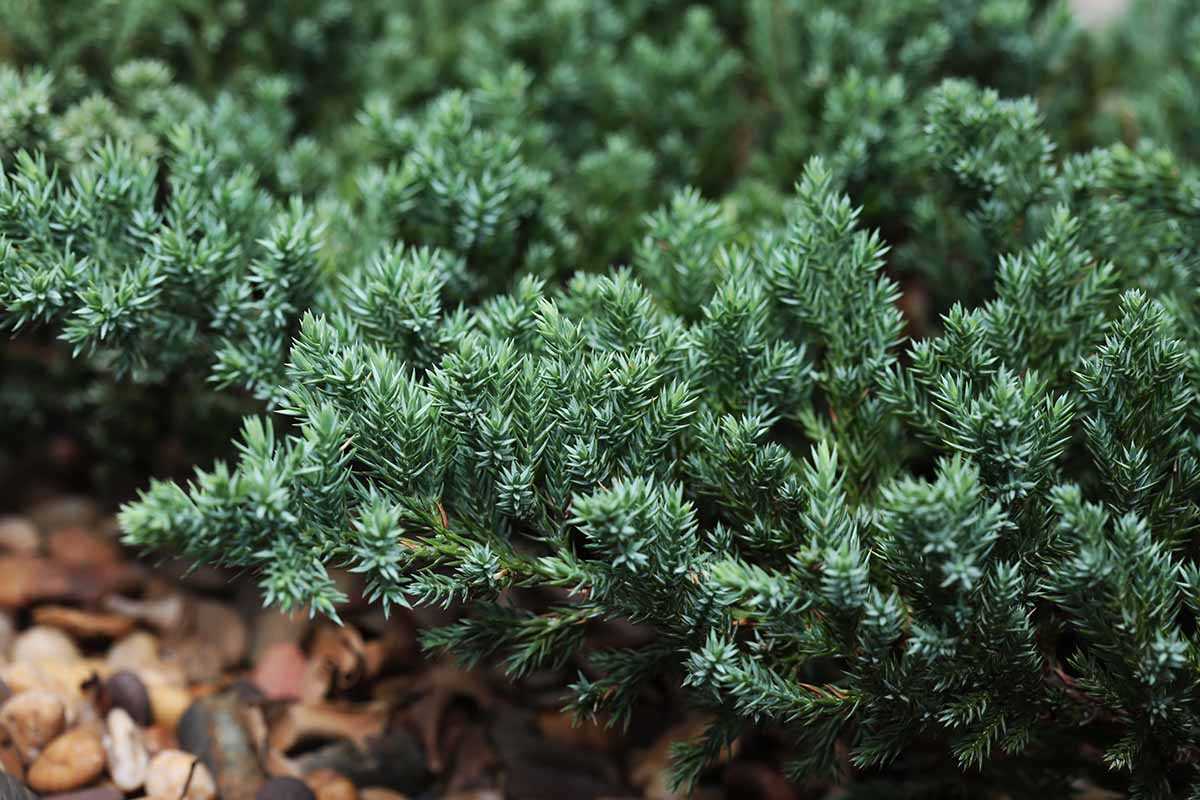
Some juniper varieties require more maintenance than others. If you’re looking for a low-maintenance option, choose a juniper variety that is drought-tolerant, disease-resistant, and doesn’t require frequent pruning or shaping.
6. Hardiness
Consider the hardiness of the juniper variety for your particular climate. Some junipers are more cold-tolerant, while others are better suited for warmer regions. Make sure to choose a variety that can withstand the temperature extremes in your area.
By considering these factors and doing some research, you can select the right juniper variety that will thrive in your garden and complement your landscape design.
Different Juniper Species
Junipers are a diverse group of evergreen shrubs and trees that belong to the cypress family. There are over 50 known species of junipers, each with its own unique characteristics and growing requirements. Here are some of the most common juniper species:
1. Eastern Red Cedar (Juniperus virginiana)
The Eastern Red Cedar is a native North American species that can be found throughout the eastern and central United States. It is a small to medium-sized tree with dense foliage and a pyramidal shape. The leaves are scale-like and dark green in color. Eastern Red Cedar is known for its hardiness and adaptability to a wide range of growing conditions.
2. Rocky Mountain Juniper (Juniperus scopulorum)
The Rocky Mountain Juniper is native to western North America, particularly the Rocky Mountains region. It is a slow-growing tree or shrub with a dense, conical form. The foliage is blue-green in color and needle-like. Rocky Mountain Juniper is well-suited for use in landscaping due to its hardiness and ability to tolerate dry and rocky soils.
3. Chinese Juniper (Juniperus chinensis)
The Chinese Juniper is a widely cultivated species that is native to eastern Asia. It is a medium-sized shrub or tree with a broad, conical form. The foliage can vary in color from dark green to blue-green or even golden. Chinese Junipers are popular in gardens and parks due to their ornamental value and ability to tolerate a variety of soil conditions.
4. Common Juniper (Juniperus communis)
The Common Juniper is a widespread species that can be found throughout the Northern Hemisphere, including North America, Europe, and Asia. It is a small to medium-sized shrub with a spreading form. The foliage is scale-like and gray-green in color. Common Juniper is known for its hardiness and ability to tolerate poor soil conditions.
5. Creeping Juniper (Juniperus horizontalis)
The Creeping Juniper, also known as the Creeping Cedar, is a low-growing shrub that is native to North America. It has a prostrate form with trailing branches that spread out horizontally. The foliage is scale-like and gray-green, turning bronze in the winter. Creeping Juniper is often used as a ground cover in landscaping due to its ability to tolerate poor soil and harsh growing conditions.
6. Shore Juniper (Juniperus conferta)
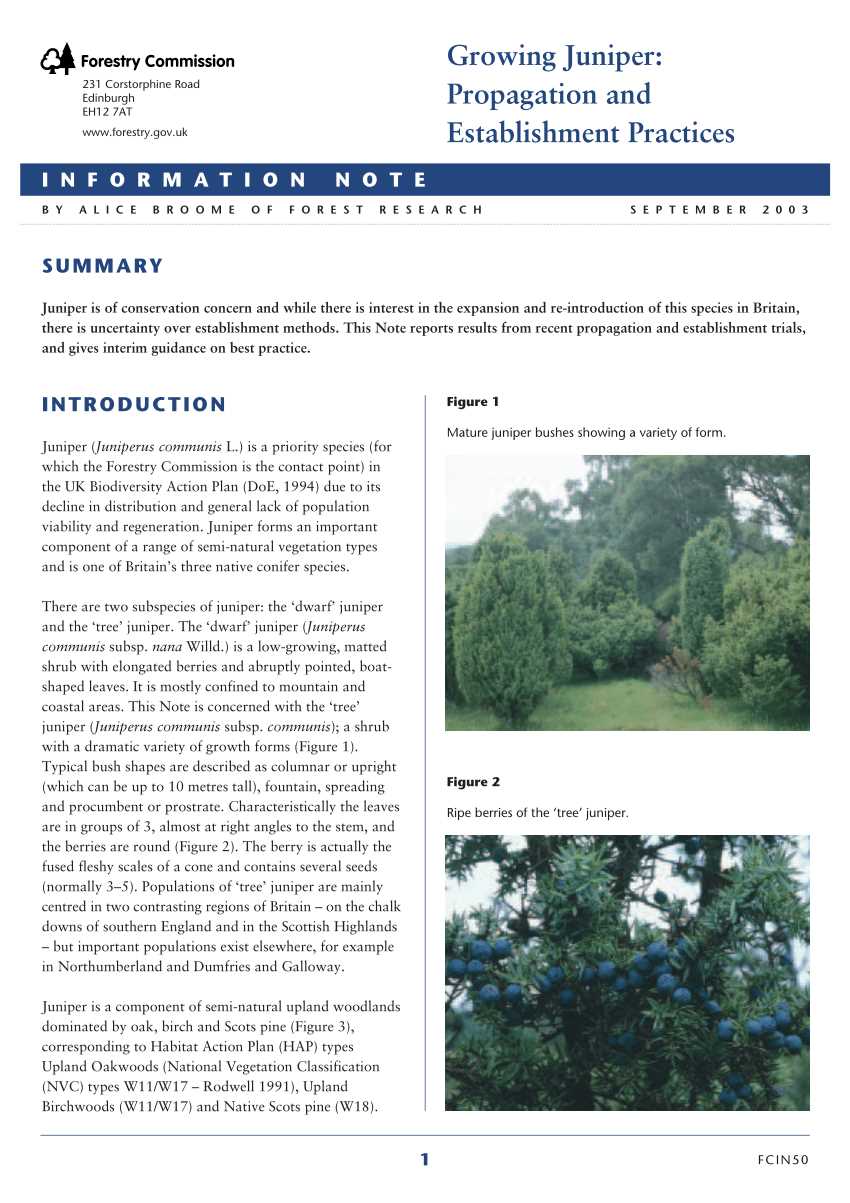
The Shore Juniper, also known as the Japanese Juniper, is a dense, low-growing shrub that is native to coastal regions of Japan. It has a spreading form with dark green, needle-like foliage. Shore Juniper is commonly used in coastal gardens and landscapes due to its tolerance of salt spray and sandy soils.
These are just a few examples of the many juniper species that are available. Each species has its own unique characteristics and growing requirements, so it’s important to choose the right species for your specific needs and conditions.
Features to Consider
Variety of Species
Juniper species come in a wide range of varieties, each with its own unique characteristics. There are over 50 species of juniper, offering options for different climates, soil types, and aesthetic preferences. Some common species include Juniperus virginiana, Juniperus scopulorum, and Juniperus communis.
Growth Habit
When selecting a juniper, it’s important to consider its natural growth habit. Some junipers have a low and spreading habit, making them ideal for ground cover or erosion control. Others have an upright or columnar growth habit, making them suitable for vertical accents or privacy hedges. Understanding the growth habit of a juniper will help you choose the right plant for your specific needs.
Size
Junipers vary in size, ranging from dwarf varieties that stay under 3 feet tall to large cultivars that can grow over 15 feet in height. Consider the available space in your garden and the desired height and spread of the juniper when making your selection.
Foliage Color and Texture
Junipers display a range of foliage colors and textures, offering different visual interest throughout the year. Some junipers have blue-green foliage, while others have gray, gold, or variegated foliage. Consider the overall color scheme of your garden and choose a juniper with foliage that complements the surrounding plants. Additionally, the texture of the foliage can vary from soft and fine to coarse and prickly, so consider the tactile qualities of the plant as well.
Tolerance to Environmental Conditions
Junipers are known for their tolerance to a variety of environmental conditions, including drought, poor soil, and salt spray. However, different species and varieties may have specific preferences and tolerances. Consider the climate and soil conditions in your region and choose a juniper that is well-suited to thrive in those conditions.
Maintenance Needs
Some junipers require minimal maintenance and are low-maintenance plants, while others may require regular pruning or shaping to maintain their desired form. Consider the amount of time and effort you are willing to invest in maintaining your juniper and choose a variety that fits your maintenance preferences.
Wildlife Value
Junipers provide habitat and food sources for a variety of wildlife, including birds and small mammals. Consider the potential wildlife value of the juniper species you are considering, especially if you want to attract wildlife to your garden.
Special Uses
Junipers have been used for various special purposes beyond their ornamental value. Some species produce berries that are used in culinary applications or for making gin. Others have medicinal uses or are used for their aromatic qualities. If you have a specific special use in mind for your juniper, research the suitable species or cultivars that fulfill those requirements.
Pricing and Availability
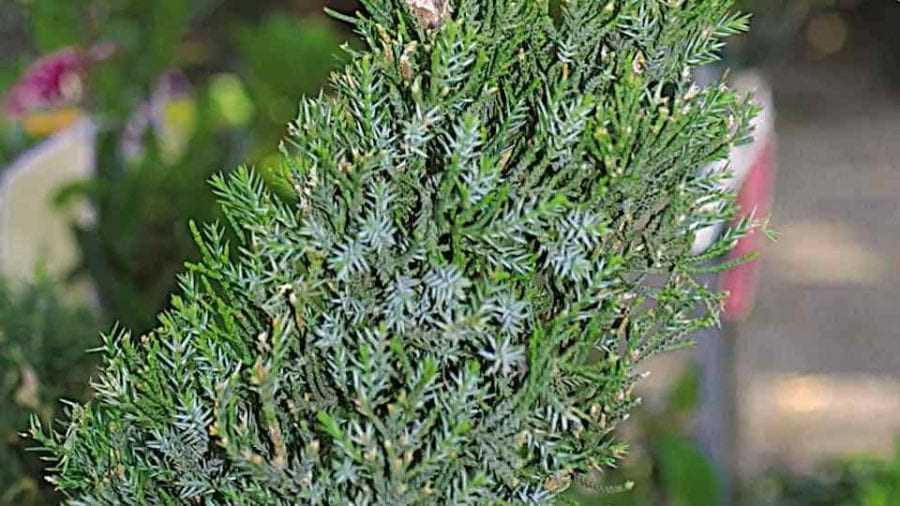
Finally, consider the pricing and availability of the juniper species you are interested in. Some rare or exotic species may be harder to find and more expensive. Consider your budget and the availability of the plant before making your final selection.
Juniper Propagation
Propagation Methods
There are several methods that can be used to propagate juniper plants:
- Seeds: Juniper seeds can be collected from mature cones and planted in a well-draining soil mix. It is important to stratify the seeds, which means subjecting them to a period of cold temperatures, before planting to improve germination rates.
- Cuttings: Juniper cuttings can be taken from mature branches in the spring or early summer. The cuttings should be around 4-6 inches long and stripped of leaves on the lower half. These cuttings can then be rooted in a moist rooting medium, such as sand or vermiculite.
- Layering: Layering is a method where a branch is bent down to the ground and partially buried in soil, allowing it to develop roots before severing it from the parent plant. This can be done in the spring or fall, and the rooted branch can then be transplanted as a new plant.
Caring for Juniper Cuttings
Once you have taken juniper cuttings, it is important to provide them with proper care to ensure successful rooting:
- Moisture: Keep the rooting medium consistently moist, but not waterlogged, to encourage root development.
- Light: Place the cuttings in a bright location with indirect sunlight. Avoid exposing them to intense heat or direct sunlight, as this can cause wilting or burning.
- Temperature: Maintain a temperature between 60-75°F (15-24°C) to promote root growth. Avoid fluctuating temperatures or cold drafts.
- Humidity: Provide high humidity around the cuttings by placing them under a humidity dome or covering them with a plastic bag. This helps prevent excessive moisture loss through evaporation.
- Fertilization: Avoid fertilizing the cuttings until they have rooted. Once they have established roots, you can begin feeding them with a diluted liquid fertilizer.
Transplanting Juniper Cuttings
Once the juniper cuttings have successfully rooted, they can be transplanted into individual pots or into the garden. Here are some tips for transplanting:
- Choose the right location: Make sure to select a suitable location in your garden that provides the proper sunlight, soil drainage, and space for the specific juniper species or cultivar.
- Prepare the soil: Amend the planting hole with organic matter and ensure that the soil is well-draining. Junipers prefer sandy or loamy soil.
- Carefully remove the cutting: Gently remove the rooted cutting from the rooting medium, taking care not to damage the fragile roots.
- Plant at the right depth: Place the cutting in the planting hole, making sure that the soil level matches the level of the root ball. Firmly press the soil around the root ball to eliminate air pockets.
- Water and mulch: Water the newly transplanted cutting thoroughly after planting and apply a layer of organic mulch around the base to conserve moisture and suppress weed growth.
| Propagation Method | Best Time to Propagate | Advantages | Disadvantages |
|---|---|---|---|
| Seeds | Spring or fall | Large number of plants can be grown from a single cone | Slow germination and variability in seedling quality |
| Cuttings | Spring or early summer | Higher success rate compared to seeds | Takes longer time for plants to reach mature size |
| Layering | Spring or fall | Plants are already rooted when separated from parent plant | Requires more space and time for root development |
Methods of Propagation
There are several methods of propagating juniper plants. These include:
Seed Propagation
One method of propagating juniper plants is through seed propagation. This involves collecting seeds from mature juniper plants and planting them in a suitable growing medium. The seeds should be stratified, which means they should be exposed to cold temperatures for a period of time to break dormancy. Once stratified, the seeds can be sown in pots or seed trays and kept in a greenhouse or protected area until they germinate. This method requires patience, as it can take some time for the seeds to germinate and for the plants to reach a suitable size for transplanting.
Cutting Propagation
Another common method of propagating juniper plants is through cutting propagation. This involves taking cuttings from an existing juniper plant and rooting them to create new plants. The best time to take cuttings is in the spring or early summer when the plant is actively growing. The cuttings should be taken from healthy, disease-free plants and should be around 4-6 inches long. The cuttings can be dipped in rooting hormone to encourage root development and then planted in a well-draining potting mix. The cuttings should be kept in a warm, humid environment until they begin to root, which can take several weeks to a few months. Once rooted, the new plants can be transplanted into larger pots or into the garden.
Layering
Layering is another method of propagating juniper plants. This involves bending a low-growing branch of the plant to the ground and burying a section of it in soil. The buried section should be wounded with a knife to encourage root development. The branch should be anchored in place with a stake or stone, and the buried section should be kept moist. After several months, roots will begin to develop on the buried section of the branch. Once these roots are well-established, the branch can be severed from the parent plant and transplanted into a new location.
Grafting
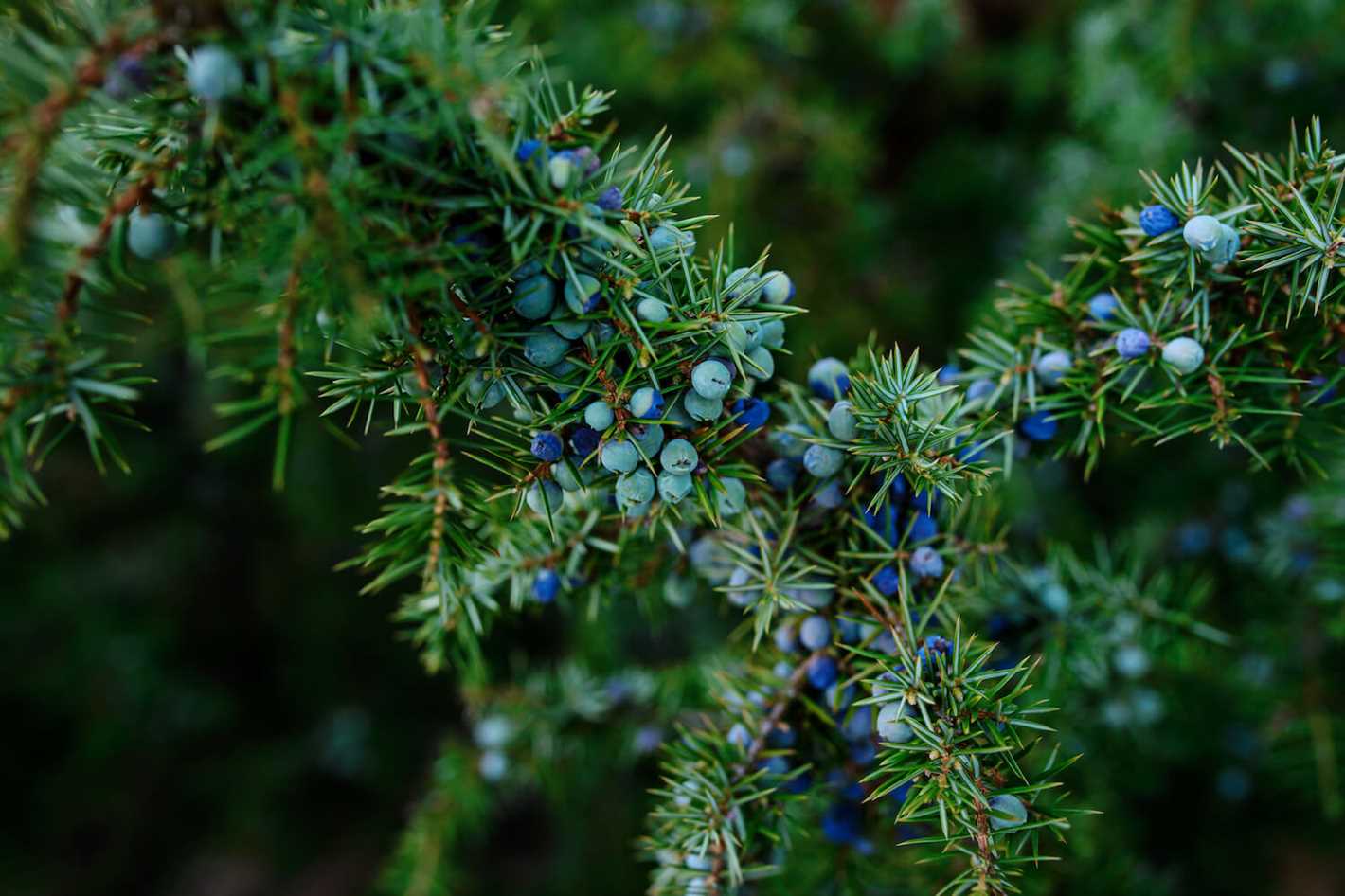
Grafting is a more advanced method of propagating juniper plants. This involves joining a piece of one juniper plant, known as the scion, to the rootstock of another juniper plant. The scion is usually a desired cultivar or variety, while the rootstock is a hardy and vigorous juniper plant. Grafting can be done in the spring or late summer when the sap is flowing. The scion is carefully inserted into a cut made in the rootstock, and the two pieces are bound together with grafting tape or a similar material. The graft is then covered with a plastic bag to create a humid environment and promote healing. Over time, the scion will grow and merge with the rootstock, creating a new plant with the desired characteristics of the scion.
Division
Division is another method of propagating juniper plants, particularly for species that form clumps or suckers. This involves digging up an established juniper plant and dividing it into smaller sections, each with its own root system. The sections can be replanted immediately in suitable locations or potted up for later planting. Division is best done in the spring or early fall when the plant is not actively growing, and the soil is moist.
Air Layering
Air layering is a method of propagating juniper plants that involves creating a new plant from a stem section while it is still attached to the parent plant. This method is suitable for species with long, flexible branches. To air layer the plant, a section of the stem is wounded and wrapped in moist sphagnum moss or a similar rooting medium. The wrapped section is then covered with plastic wrap or a plastic bag to create a humid environment. Over time, roots will develop on the stem section, and once these roots are well-established, the stem section can be severed from the parent plant and transplanted into a new location.
Suckers
Some juniper species produce suckers, which are new shoots that emerge from the base of the plant. These suckers can be propagated by digging them up and replanting them in suitable locations. Suckers are often genetically identical to the parent plant and can be a quick and easy method of propagating junipers.
Overall, there are several methods of propagating juniper plants, and the best method will depend on the specific juniper species and desired outcome. Whether you choose to propagate by seeds, cuttings, layering, grafting, division, air layering, or utilizing suckers, the key is to provide the right conditions and care to ensure successful propagation.
Tips for Successful Juniper Propagation
Junipers are beautiful and versatile plants that can be propagated through various methods. Whether you want to expand your juniper collection or create new plants for your garden, here are some tips to help you succeed in propagating junipers.
1. Choose the Right Method
There are several methods you can use to propagate junipers, such as seed propagation, stem cuttings, and layering. Each method has its advantages and disadvantages, so choose the one that suits your needs and resources best.
2. Find the Right Juniper Species
Not all juniper species are suitable for propagation, so make sure you choose a variety that is known to propagate well. Some popular species for propagation include Juniperus chinensis, Juniperus Sabina, and Juniperus horizontalis.
3. Collect Seeds in Fall
If you decide to propagate junipers from seeds, collect them in the fall when they are ripe. Look for juniper cones that have turned a bluish-black color and are slightly open. Collect the cones and extract the seeds for planting.
4. Prepare the Cuttings
If you choose to propagate junipers through stem cuttings, make sure to take cuttings from healthy and mature plants. Cut a 6-inch long stem from the parent plant, remove the lower leaves, and dip the cut end in a rooting hormone.
5. Provide the Right Growing Conditions
Junipers prefer well-draining soil and full sun. Make sure to provide the right growing conditions for your propagated junipers, whether they are in pots or planted directly in the ground. Water them regularly, but avoid overwatering to prevent root rot.
6. Be Patient
Junipers can take some time to root and establish themselves, especially when propagated from cuttings. Be patient and provide the necessary care and attention. It may take several months for the new plants to show signs of growth.
7. Protect the Young Plants
Once your junipers have rooted and started to grow, protect them from extreme temperatures, strong winds, and pests. Use mulch to insulate the roots and provide some shade during hot summer days.
8. Divide Established Plants
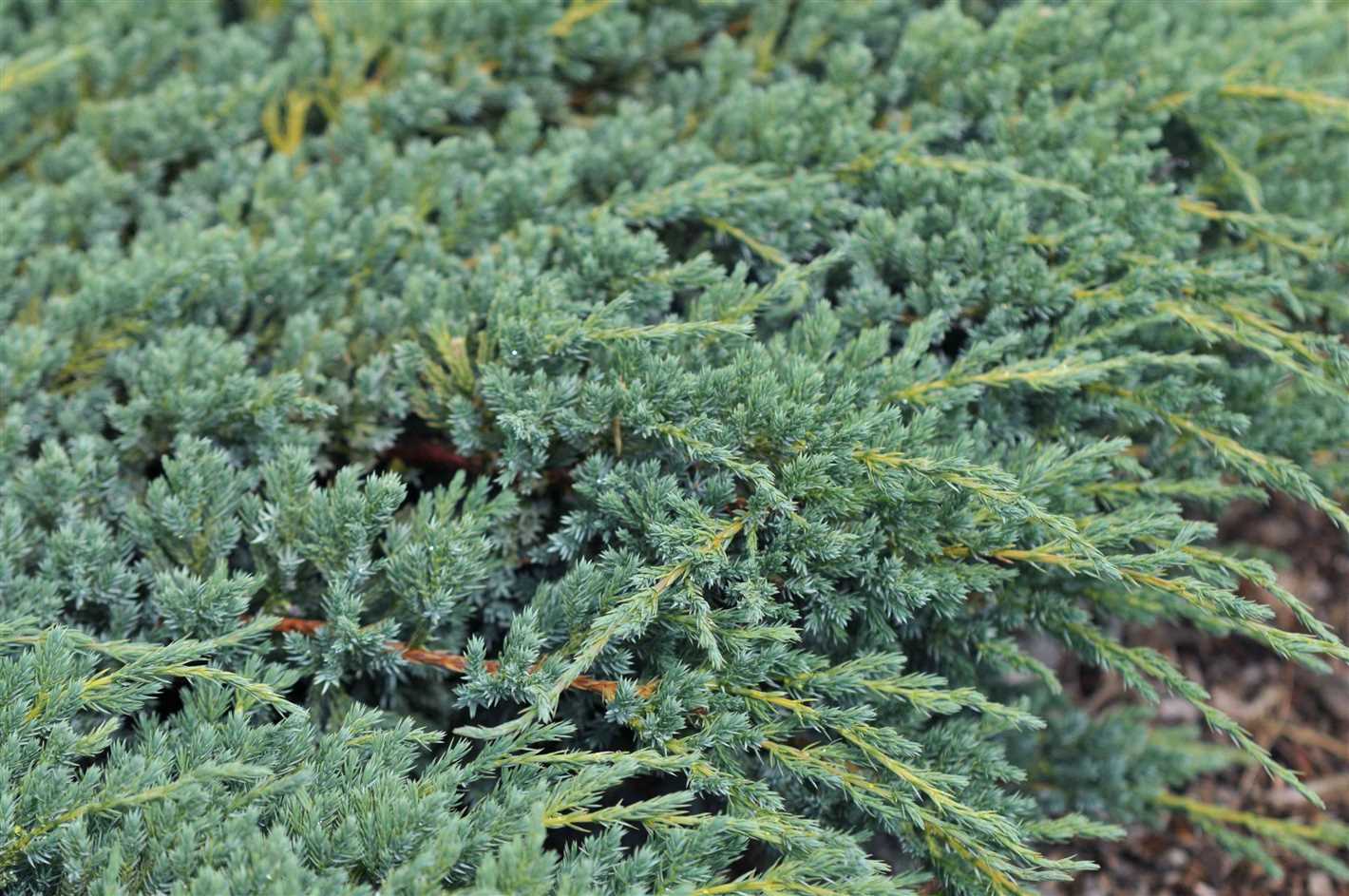
If you have an established juniper plant, you can propagate it by dividing the plant into smaller sections. Dig up the plant and carefully separate the root ball into several sections, ensuring each section has enough roots and foliage.
9. Learn from Experience
Successful propagation often requires experimentation and learning from experience. Don’t be discouraged by failures; instead, learn from them and adjust your techniques accordingly. With practice, you will become more skilled at propagating junipers.
By following these tips, you can increase your chances of successful juniper propagation and enjoy the beauty of these versatile plants in your garden.
Caring for Juniper
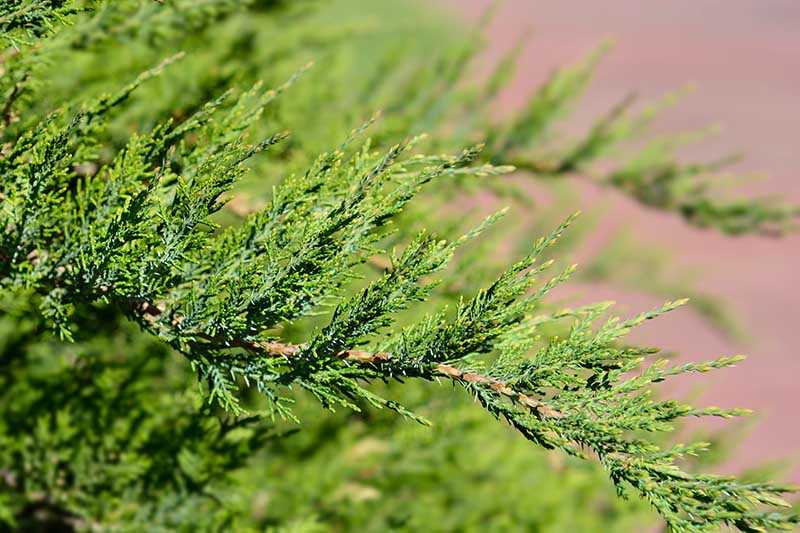
Junipers are relatively low-maintenance plants but still require proper care to thrive and stay healthy. Here are some essential tips for caring for juniper:
1. Watering
Water junipers deeply but infrequently. Let the soil dry out between waterings to avoid overwatering, as excessive moisture can cause root rot. Provide enough water to moisten the soil to a depth of 1-2 inches. Mature junipers can generally tolerate drought conditions better than young plants.
2. Pruning
Regular pruning helps maintain the shape and size of juniper plants. Prune in late winter or early spring before new growth starts. Remove dead, damaged, or diseased branches to promote airflow and prevent the spread of diseases. Trim back any overgrown branches to maintain the desired form and density.
3. Fertilizing
Junipers are generally low- to medium-nutrient plants and do not require heavy fertilization. Apply a balanced slow-release fertilizer in early spring to provide some nutrients for the growing season. Avoid overfertilizing, as it can lead to excessive growth and a weakened plant.
4. Mulching
Applying a layer of mulch around juniper plants helps conserve moisture, suppress weed growth, and regulate soil temperature. Use organic mulch, such as bark chips or shredded leaves, and spread it about 2-3 inches deep around the base of the plant, being careful not to mound it against the trunk.
5. Sunlight
Most juniper species thrive in full sun to partial shade. Ensure they receive at least 6 hours of direct sunlight per day for optimal growth and to maintain their vibrant color. Be cautious of planting junipers in areas with excessive shade, as it can lead to weak and sparse growth.
6. Pest and Disease Control
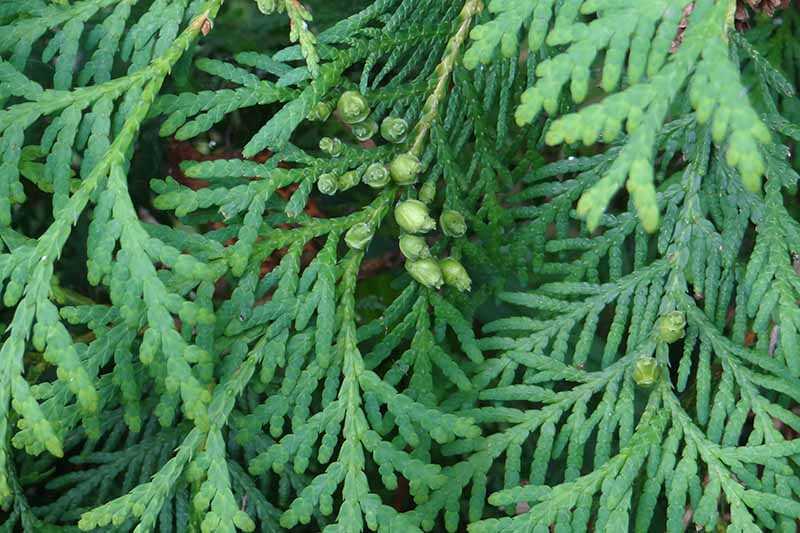
Junipers are generally resistant to pests and diseases, but some common issues include spider mites, bagworms, and cedar-apple rust. Regularly inspect the plants for signs of infestation or disease and take appropriate measures, such as pruning infected branches or applying an appropriate insecticide or fungicide.
7. Winter Protection
While many juniper species are cold hardy, young plants or those in exposed locations may benefit from some winter protection. Use burlap or other breathable material to wrap the plant to shield it from harsh winds and extreme temperatures. Remove the covering once the danger of frost has passed.
By following these care tips, you can ensure that your juniper plants remain healthy and beautiful for years to come.
Pruning and Shaping
Pruning is an important practice in maintaining the health, appearance, and shape of juniper plants. Regular pruning helps to stimulate growth, control size, and remove dead or diseased branches. It also allows for shaping the plants into the desired form, making them visually appealing in any landscape.
When to Prune
The best time to prune junipers is during their dormant period, which is typically in late winter or early spring. Pruning during this time ensures minimal stress on the plant and allows it to heal quickly. Avoid pruning during periods of active growth in spring or summer, as this can lead to excessive growth and make the plant more susceptible to disease.
Tools for Pruning
Before pruning, ensure you have the right tools. Sharp and clean pruning shears, loppers, and a pruning saw are essential for achieving clean cuts without damaging the plant. It is also important to disinfect the tools before and after use to prevent the spread of disease.
Pruning Techniques
When pruning junipers, it is important to follow proper techniques to avoid harming the plant. Here are a few guidelines:
- Begin by removing dead, diseased, or damaged branches. Cut them back to healthy wood or the main stem.
- Thin out the plant by selectively removing some interior branches. This helps to improve air circulation and reduce the risk of disease.
- When shaping the plant, start by removing long, straggly branches to maintain a neat, compact form.
- Trim back any branches that are crossing or rubbing against each other.
- Avoid cutting into old wood, as junipers may not regenerate growth from those areas.
Shaping Junipers
Junipers can be shaped into a variety of forms, including pyramidal, columnar, mound, or even topiary shapes. Here are some tips for shaping junipers:
- Begin shaping when the plant is young and flexible to achieve the desired form.
- Regularly trim the branches to maintain the shape and size.
- Consider using templates or wire frames to guide the growth into specific shapes.
- Remember that each species of juniper has its own growth habit, so take this into consideration when shaping.
Conclusion
Pruning and shaping junipers is an important part of their care and maintenance. By following proper techniques, you can ensure healthy growth and create visually appealing plants that enhance your landscape. Remember to prune during the appropriate time, use the right tools, and shape the plants regularly to maintain their desired form.
Questions and Answers:
What are the different species of juniper?
There are several species of juniper, including Juniperus communis, Juniperus chinensis, Juniperus horizontalis, and Juniperus virginiana. Each species has its own unique characteristics and growing requirements.
How do I grow juniper plants?
Juniper plants are relatively easy to grow and require minimal care. They prefer well-drained soil and full sun, but can tolerate some shade. It’s important to water the plants regularly, especially during the first year of growth, and to prune them to maintain their shape and size.
Can juniper plants be grown from seeds?
Yes, juniper plants can be grown from seeds. However, it’s important to note that juniper seeds have a hard outer coat and may require stratification before they can germinate. Stratification involves exposing the seeds to a period of cold and moist conditions to break their dormancy.
Can juniper plants be propagated through cuttings?
Yes, juniper plants can be propagated through cuttings. Softwood cuttings are typically taken in the spring or early summer, while hardwood cuttings are taken in the late summer or fall. The cuttings should be about 4 to 6 inches long and taken from healthy, disease-free parent plants. Hormone rooting powder can be used to increase the chances of successful rooting.
How tall do juniper plants typically grow?
The height of juniper plants can vary depending on the species and cultivar. Some juniper shrubs can be low-growing and reach a height of only a few inches, while others can grow several feet tall. It’s important to choose a juniper variety that suits your landscape and space requirements.
Do juniper plants require any special care?
Juniper plants are relatively low-maintenance and require minimal care. However, it’s important to keep an eye out for common issues such as pest infestations and fungal diseases. Regular pruning and proper watering can help prevent these problems. Additionally, juniper plants should be protected from extreme cold and strong winds.
Can juniper plants be used for bonsai?
Yes, juniper plants are popular choices for bonsai due to their small and compact growth habit. They can be trained and pruned to create beautiful miniature trees. However, it’s important to choose a juniper species that is suitable for bonsai and to provide the necessary care and maintenance to keep the bonsai healthy.







